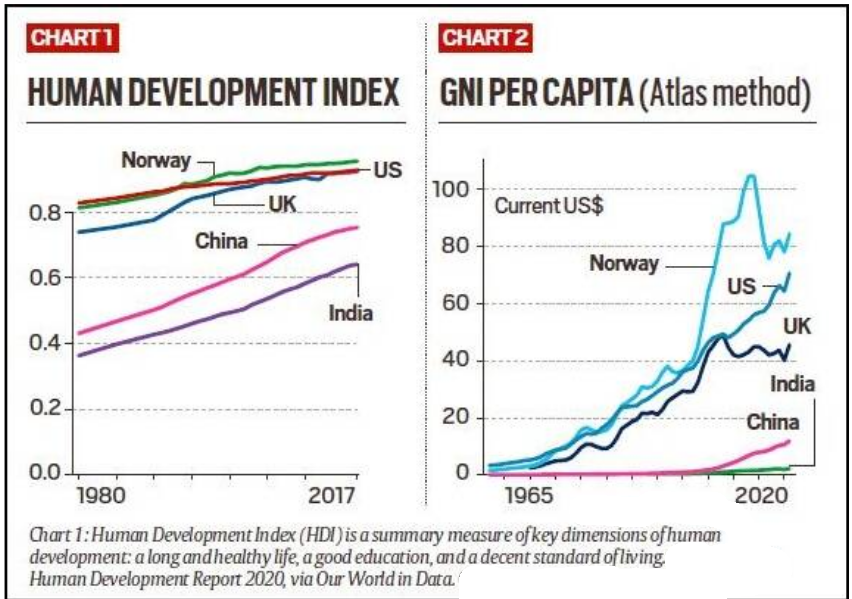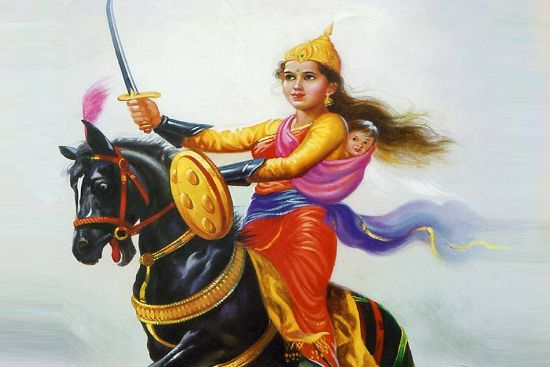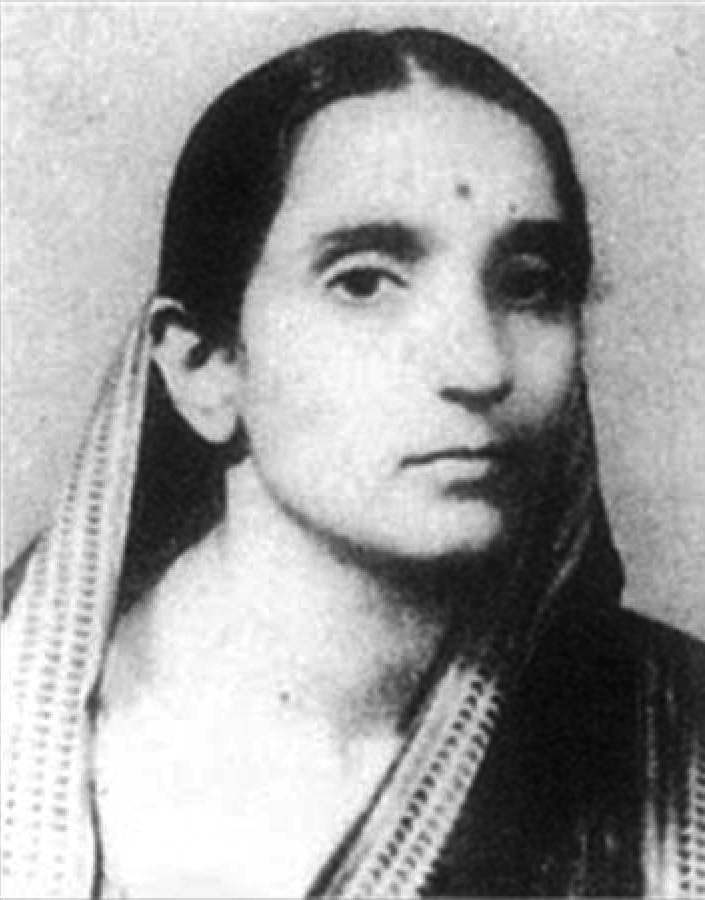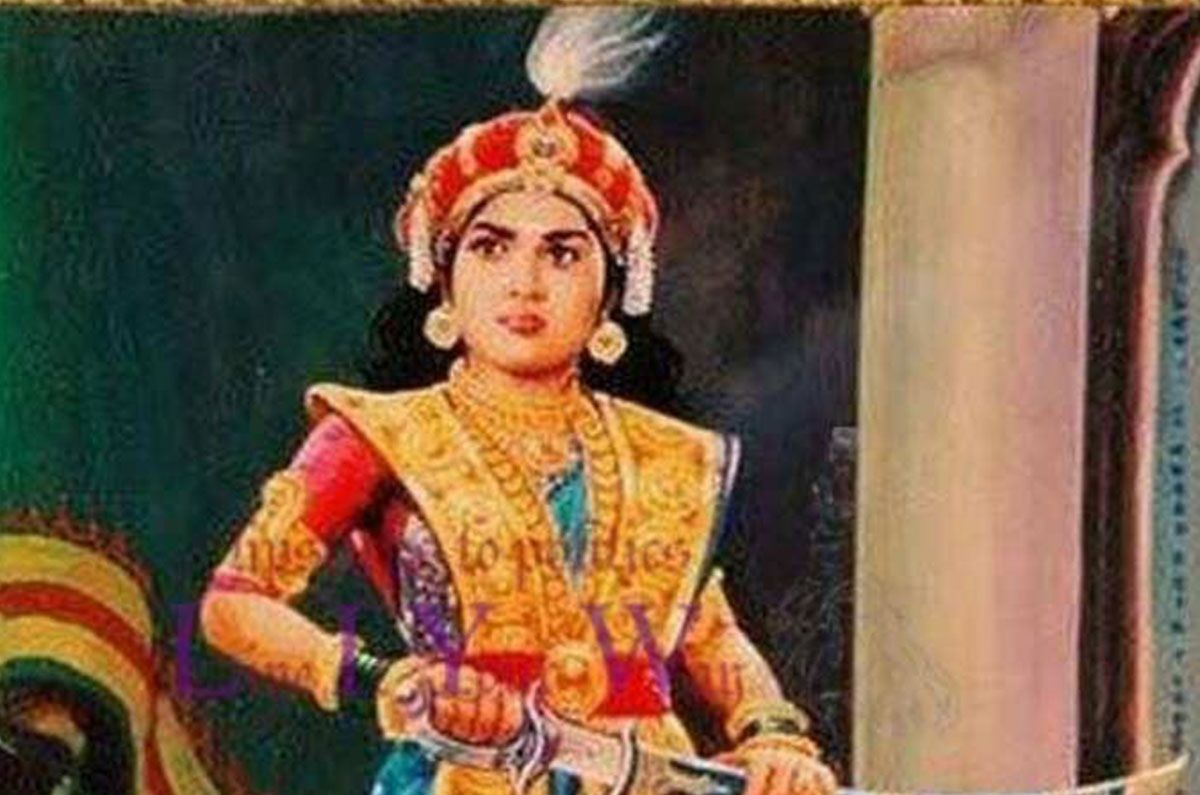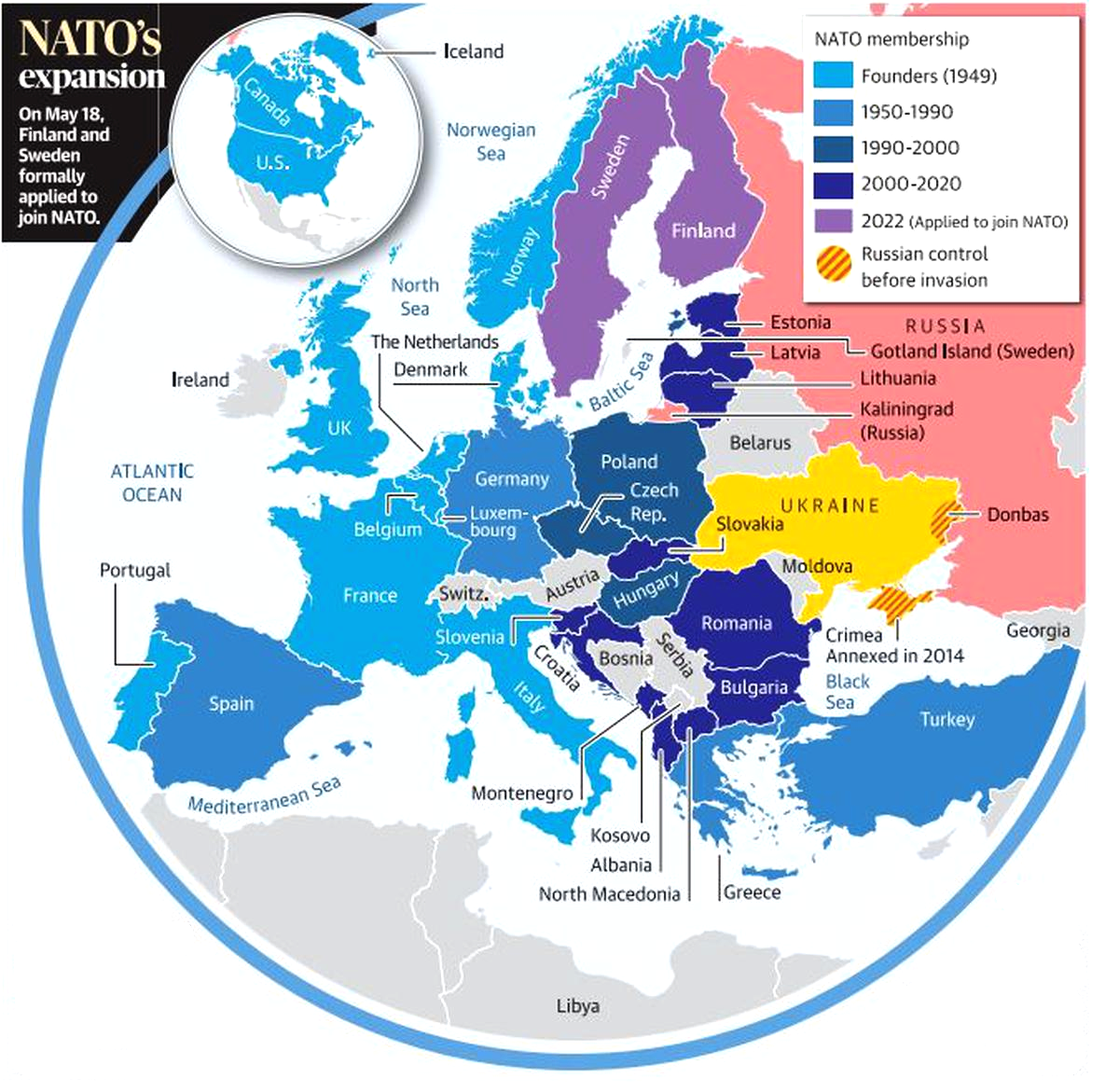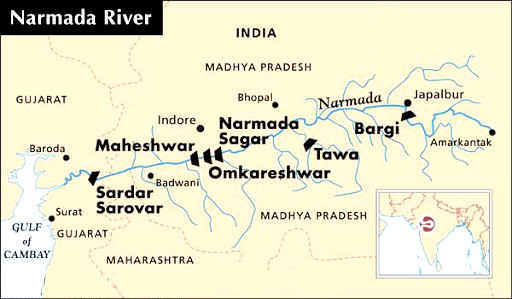Indian Economy
The Developed Country Goal
For Prelims: Developed Country, Gross Domestic Product (GDP), Per Capita Income, Human Development Index (HDI), United Nations, World Bank, World Trade Organization, World Economic Forum, Gross National Income (GNI).
For Mains: significance of per capita income and economic prosperity to meet India’s goal of a developed country.
Why in News?
Recently, the Prime Minister in his Independence Day Speech laid out Panch Pran (Five Vows) to be completed by 2047 when India celebrates 100 years of Independence,
- The first vow is for India to become a Developed Country in the next 25 years.
- The remaining pledges for 2047 are - removing any sign of servility, pride in heritage, unity and fulfilling our duties.
What is a Developed Country?
- A Developed Country is industrialised, has a high quality of life, a developed economy and advanced technological infrastructure relative to less industrialised nations.
- Whereas developing countries are those in the process of industrialisation or are pre-industrial and almost entirely agrarian.
- The most common criteria for evaluating the degree of economic development are:
- GDP:
- The Gross Domestic Product (GDP), or the monetary measure of all goods and services produced in a country in a year.
- Countries with a high GDP and per capita income (the amount of money earned per person) are considered developed.
- Dominate Tertiary and Quaternary Sector:
- The Countries in which the tertiary (companies that provide services such as entertainment, financial, and retailers) and quaternary sectors of industry (knowledge-based activities such as information technology, research, and development, as well as consulting services and education) dominate are described as developed.
- Post-Industrial Economies:
- Also, the developed countries generally have more advanced post-industrial economies, meaning the service sector provides more wealth than the industrial sector.
- Human Development Index:
- Other criteria are the scale of infrastructure, the general standard of living, and the Human Development Index (HDI).
- As the HDI focuses on indices for life expectancy and education and does not take into account factors such as the net wealth per capita or the relative quality of goods in a country.
- This is why even some of the most advanced countries, including the G7 members (Canada, France, Germany, Italy, Japan, the UK, the US, and the European Union) and others, do not do too well on HDI. That's why countries like Switzerland rank high on HDI.
- Other criteria are the scale of infrastructure, the general standard of living, and the Human Development Index (HDI).
- GDP:
What is the Definition of a Developed Country?
- There is no all-agreed definition of a developed country.
- Agencies such as the United Nations, the World Bank, the World Trade Organization, and the World Economic Forum use their indicators to club developed and developing countries.
- For example, the UN classifies countries into low, lower-middle, upper-middle, and high-income countries.
- This classification is based on an individual country’s gross national income (GNI) per capita.
- Low –Income Economy: GNI per capita of up to $1,085
- Lower Middle-income: GNI per capita up to $4,255
- Upper-Middle-income: GNI per capita $13,205
- High-Income economy: GNI per capita above $13,205
- This classification is based on an individual country’s gross national income (GNI) per capita.
Why is the United Nations Classification Contested?
- The UN classification is not very accurate as it focuses on limited analytical value. due to which only the top three countries - the US, the UK & Norway are categorized as developed countries.
- Whereas, almost there are 31 developed countries, and the rest except 17 (economies in transition) are designated as developing countries.
- In the case of China, the country’s capita income is closer to Norway’s than Somalia’s.
- China’s per capita income is 26 times that of Somalia’s while Norway’s is just about seven times that of China’s, but still, it got the tag of a developing country.
- On the other hand, a country like Ukraine, with a per capita GNI of $4,120 (a third of China’s) designated as economies in transition rather than a developed nation.
Where Does India Stand?
- India is currently far behind both the developed countries, as well as some developing countries.
- In terms of GDP, India is the sixth largest economy but in the case of per capita income, India is behind even Bangladesh.
- Further, China’s per capita income is 5.5 times that of India, and the UK’s is almost 33 times.
- To map this inequality and match the scores of India and other countries we look at Human Development Index (HDI),
- India has performed fairly well.
- The life expectancy at birth in India has gone from around 40 years in 1947 to around 70 years now.
- India has also taken giant strides in education enrolment at all three levels — primary, secondary, and tertiary.
- To be called a developed country there is a need to grow the per capita income as the people as a unit matters more.
- The disparities in per capita income often show up in the overall quality of life in different countries.
Where Does India Lag?
- According to a 2018 diagnostic report on India by the World Bank, despite being the third largest economy in terms of purchasing power parity most Indians are still relatively poor compared to the people in other middle-income or rich countries.
- Almost 10% of Indians, at most, have consumption levels above the commonly used threshold of USD 10 (PPP) per day expenditures for the global middle class.
- Further, other metrics, such as the food share of consumption, suggest that even rich households in India would have to see a substantial expansion of their total consumption to reach the levels of poor households in rich countries.
How can India Achieve the Developed Country Goal by 2047?
- As per The World Bank’s 2018 report, by 2047 — the centenary of its independence — at least half its citizens could join the ranks of the global middle class.
- This will mean that households have access to better education and health care, clean water, improved sanitation, reliable electricity, a safe environment, affordable housing, and enough discretionary income to spend on leisure pursuits.
- Further, the report highlighted the precondition of income well above the extreme poverty line, as well as vastly improved public service delivery.
- This will mean that households have access to better education and health care, clean water, improved sanitation, reliable electricity, a safe environment, affordable housing, and enough discretionary income to spend on leisure pursuits.
What are India's Achievements Since Independence?
- GDP:
- India's GDP rose from Rs 2.79 lakh crore in 1950-51 to an estimated Rs 147.36 lakh crore in 2021-22.
- India's economy, currently at USD 3.17 trillion, is expected to become the fifth largest in the world in 2022.
- Forex:
- India's foreign exchange reserves have risen from Rs 911 crore in 1950-51 to Rs 45,42,615 crore in 2022.
- Now, India has the fifth-largest forex reserves in the world.
- Food Production:
- India's foodgrain production has increased from 50.8 million tonnes in 1950-51 to 316.06 million tonnes now.
- Lietracy rate:
- The literacy rate has also improved from 18.3% in 1951 to 78%. The female literacy rate has improved from 8.9% to over 70%.
UPSC Civil Services Examination Previous Year Question (PYQ)
Prelims
Q. Increase in absolute and per capita real GNP does not connote a higher level of economic development if (2018)
(a) industrial output fails to keep pace with agricultural output.
(b) agricultural output fails to keep pace with industrial output.
(c) poverty and unemployment increase.
(d) imports grow faster than exports.
Ans: (c)
Exp:
- GDP: It is the market value of all final goods and services produced in an economy within a given period of time (typically a year).
- GNP: Gross National Product (GNP) is Gross Domestic Product (GDP) plus net factor income from abroad. GNP measures the monetary value of all the finished goods and services produced by the country’s factors of production irrespective of their location.
- While GDP limits its interpretation of the economy to the geographical borders of the country, GNP extends it to include the net overseas economic activities performed by its nationals.
- Nominal GDP: It measures the value of all finished goods and services produced by a country at their current market prices. Thus, inflation is not adjusted while computing nominal GDP.
- Absolute GNP or Real GNP: It is also known as inflation-adjusted Gross National Product measured at constant base-year prices.
- Per Capita GNP: It is the total value of all the goods and services produced by a country in a year, including income from foreign investments, divided by the number of people living there.
- Rise in absolute GNP and per capita GNP in an economy does not connote a higher level of economic development, if there is high poverty and unemployment, and the same is on an increasing trend. Therefore, option (c) is the correct answer.
Mains
Q. Capitalism has guided the world economy to unprecedented prosperity.However, it often encourages short-sightedness and contributes to wide disparities between the rich and the poor. In this light, would it be correct to believe and adopt capitalism for bringing inclusive growth in India? Discuss (2014)
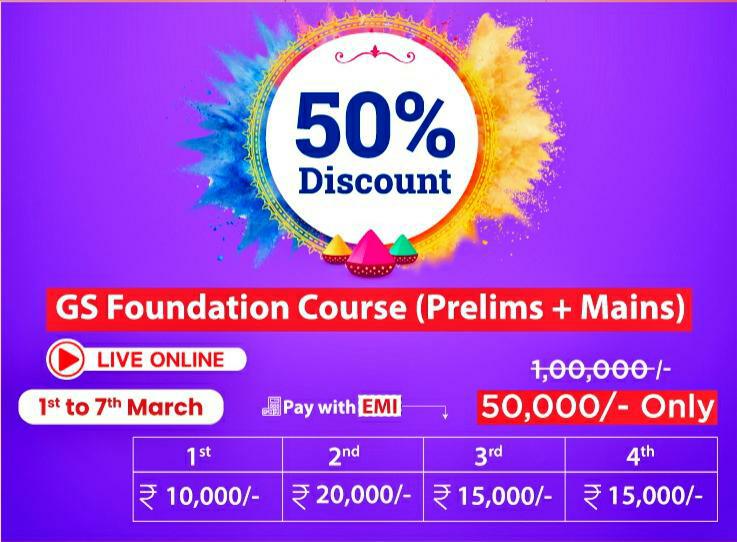
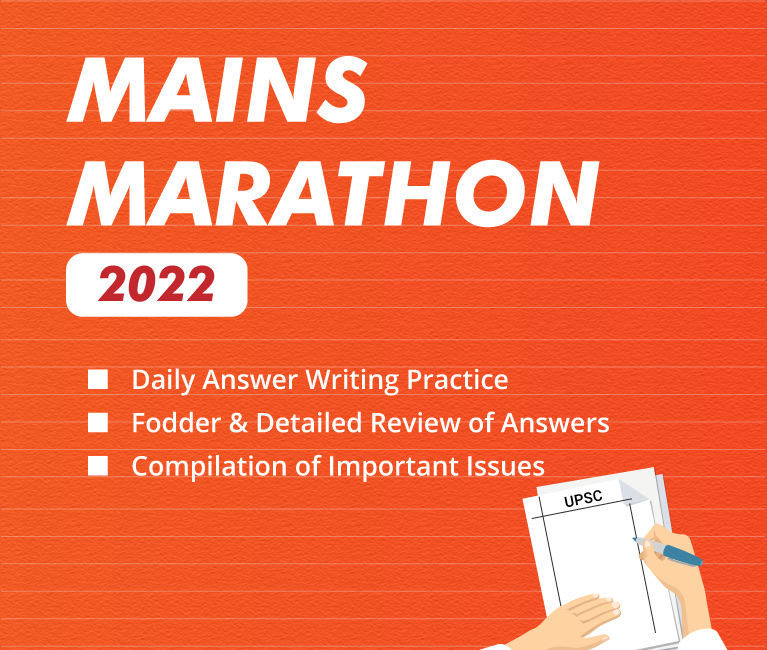
Indian History
Women Heroes of India's Freedom Struggle
For Prelims: Nari Shakti, Indian Freedom Struggle, Rani Laxmibai, Jhalkari Bai, Durga Bhabhi, Rani Gaidinliu, Begum Hazrat Mahal
For Mains: Contribution of Women in Indian Freedom Struggle
Why in News?
Recently, Prime Minister in his Independence Day Speech paid tribute to women freedom fighters.
| Role of Women in Freedom Struggle | |
| Name | Contribution in Freedom Struggle |
|
|
|
|
|
|
|
|
|
|
|
|
UPSC Civil Services Examination Previous Year Question (PYQ)
Prelims
Q. With reference to Indian freedom struggle, Usha Mehta is well-known for (2011)
(a) Running the secret Congress Radio in the wake of Quit India Movement
(b) Participating in the Second Round Table Conference
(c) Leading a contingent of Indian National Army
(d) Assisting in the formation of Interim Government under Pandit Jawaharlal Nehru
Ans: (a)
Exp:
- Usha Mehta was one of the most prominent Gandhians in India. Born in 1920 in Surat (Gujarat), she joined the freedom struggle when she was just eight years old, when she marched against the Simon Commission.
- On 14th August 1942, Mehta along with her associates started the secret Congress Radio. The radio broadcasted the voice messages of Gandhi and several other leaders to the public. The station changed its place after every broadcast to avoid capture by the government. The secret radio was also assisted by veteran socialist leader Ram Manohar Lohia. Therefore, option (a) is the correct answer


Important Facts For Prelims
Sri Aurobindo
Why in News?
On 15th August, the Prime Minister paid tribute to Sri Aurobindo on his 150th birth anniversary.
What do Know about Sri Aurobindo?
- About:
- Aurobindo Ghose was born in Calcutta on 15th August 1872. He was a yogi, seer, philosopher, poet, and Indian nationalist who propounded a philosophy of divine life on earth through spiritual evolution.
- He died on 5th December 1950 in Pondicherry.
- Aurobindo’s pragmatic strategies to get rid of British rule marked him as “the Prophet of Indian Nationalism”.
- Education:
- His education began in a Christian convent school in Darjeeling.
- He entered the University of Cambridge, where he became proficient in two classical and several modern European languages.
- In 1892, he held various administrative posts in Baroda (Vadodara) and Calcutta (Kolkata).
- He began the study of Yoga and Indian languages, including classical Sanskrit.
- Indian Revolutionary Movement:
- From 1902 to 1910 he partook in the struggle to free India from the British.
- The partition of Bengal in 1905 provoked Aurobindo to leave his job in Baroda and plunge into the nationalist movement. He started the patriotic journal Bande Mataram to propagate radical methods and revolutionary tactics instead of supplication.
- He was arrested thrice by the British — twice for sedition and once for conspiring to “wage war”.
- He was imprisoned in 1908 (Alipore Bomb case).
- Two years later he fled British India and found refuge in the French colony of Pondichéry (Puducherry), gave up overt political activities and embraced spiritual pursuits, soon to emerge as one of the most original thinkers, philosophers and spiritual masters.
- He met Mirra Alfassa in Pondicherry, and their spiritual collaboration led to “Integral Yoga”.
- Integral Yoga, is a yoga of Earth transformation. The aim of this yoga is not an escape from life or a shunning of worldly existence, but a radical change in our life even while living amidst it.
- Aurobindo’s Ideas on Second World War
- Several Indians saw the Second World War as an opportune moment to get rid of colonial occupation; Aurobindo, asked his compatriots to support the Allies and ensure Hitler’s defeat.
- Spirituality:
- In Pondichéry he founded a community of spiritual seekers, which took shape as the Sri Aurobindo Ashram in 1926.
- He believed that the basic principles of matter, life, and mind would be succeeded through terrestrial evolution by the principle of supermind as an intermediate power between the two spheres of the infinite and the finite.
- Literary Works:
- An English newspaper called Bande Mataram (in 1905)
- Bases of Yoga
- Bhagavad Gita and Its Message
- The Future Evolution of Man
- Rebirth and Karma
- Savitri: A Legend and a Symbol
- Hour of God


International Relations
Talks Between India & NATO
For Prelims: NATO, Soviet Union.
For Mains: Bilateral Groupings & Agreements, Significance India’s Relations with Other Countries.
Why in News?
It was recently reported India held its first political dialogue with the North Atlantic Treaty Organisation (NATO) in Brussels on December 12, 2019.
What is NATO?
- North Atlantic Treaty Organization (NATO) is a military alliance established by the North Atlantic Treaty (also called the Washington Treaty) of April 1949, by the United States, Canada, and several Western European nations to provide collective security against the Soviet Union.
- There are currently 30 member states.
- Original Members:
- Belgium, Canada, Denmark, France, Iceland, Italy, Luxembourg, the Netherlands, Norway, Portugal, the United Kingdom, and the United States.
- Other Countries:
- Greece and Turkey (1952), West Germany (1955, from 1990 as Germany), Spain (1982), the Czech Republic, Hungary, and Poland (1999), Bulgaria, Estonia, Latvia, Lithuania, Romania, Slovakia, and Slovenia (2004), Albania and Croatia (2009), Montenegro (2017), and North Macedonia (2020).
- France withdrew from the integrated military command of NATO in 1966 but remained a member of the organization, it resumed its position in NATO’s military command in 2009.
- Recently, Finland and Sweden have shown interest to join NATO.
- Original Members:
- Headquarters: Brussels, Belgium.
What is the NATO-India Political Dialogue?
- About:
- India held its first political dialogue with the North Atlantic Treaty Organisation (NATO) in Brussels on December 12, 2019.
- Significance:
- NATO has been engaging both China and Pakistan in bilateral dialogue.
- While Engaging NATO in a political dialogue would provide India an opportunity to bring about a balance in NATO’s perceptions about the situation in regions and issues of concern to India.
- There is convergence in the perspectives of both India and NATO on China, terrorism, and Afghanistan, including Pakistan’s role in Afghanistan.
- Issues:
- According to NATO’s perspective, the biggest threat it face was not China, but Russia whose aggressive actions are threatening European security.
- Further, NATO had faced difficulties to convene meetings of the NATO-Russia Council due to Russian refusal to place issues such as Ukraine and Intermediate-Range Nuclear Forces Treaty,
- Given the divergence among NATO countries, its view on China was seen as mixed, while it did deliberate on China’s rise, it presented both a challenge and an opportunity,
- Further, in Afghanistan, NATO saw the Taliban as a political entity.
- Given the divergence among NATO countries, its view on China was seen as mixed, while it did deliberate on China’s rise, it presented both a challenge and an opportunity,
- Further, NATO had faced difficulties to convene meetings of the NATO-Russia Council due to Russian refusal to place issues such as Ukraine and Intermediate-Range Nuclear Forces Treaty,
- According to NATO’s perspective, the biggest threat it face was not China, but Russia whose aggressive actions are threatening European security.
- NATO’S View:
- Dialogue with India would further enhance the cooperation among NATO countries and India’s geo-strategic location shares a unique perspective and enhances international security in India's own region and beyond.


Governance
Dam Management in India
For Prelims: Karam River, Narmada River, Dams of India, Regulation of Dams in India
For Mains: Concerns regarding the ageing dams of India and related steps that can can be taken
Why in News?
Recently, the outer part of the “Karam Dam”, which is being built on the Karam river, a tributary of the Narmada, collapsed.
- The Dam Safety Act 2021 covers those dams having a height of over 15m and between 10m and 15m with certain stipulations.
What are the Key Points of Narmada River?
- About: Narmada is the largest west flowing river of the peninsular region flowing through a rift valley between the Vindhya Range on the north and the Satpura Range on the south.
- Source: It rises from Maikala range near Amarkantak in Madhya Pradesh.
- Drainage: It drains a large area in Madhya Pradesh besides some areas in the states of Maharashtra and Gujarat.
- The river near Jabalpur (Madhya Pradesh) forms the DhuanDhar Falls.
- There are several islands in the estuary of Narmada of which Aliabet is the largest.
- Major Tributaries: Hiran, Orsang, the Barna and the Kolar.
- Major Hydro Power Projects in the basin: Indira Sagar, Sardar Sarovar etc.
- Narmada Bachao Andolan (NBA):
- It is an Indian social movement spearheaded by native tribes (adivasis), farmers, environmentalists and human rights activists against a number of large dam projects across the Narmada River.
- Sardar Sarovar Dam in Gujarat is one of the biggest dams on the river and was one of the first focal points of the movement.
What is the Dam Safety Act 2021?
- About:
- Dam Safety Act 2021 aims at surveillance, inspection, operation and maintenance of all specified dams across the country.
- The Act applies to all specified dams in the country i.e., those dams having a height of over 15m and between 10m and 15m with certain design and structural conditions.
- Provisions:
- It constitutes two National Bodies:
- National Committee on Dam Safety:
- Its functions include evolving policies and recommending regulations regarding dam safety.
- National Dam Safety Authority:
- Its functions include implementing policies of the National Committee, and resolving matters between State Dam Safety Organisations (SDSOs), or between a SDSO and any dam owner in that state.
- National Committee on Dam Safety:
- It also constitutes two state bodies:
- State Dam Safety Organizations (SDSOs):
- Its functions include keeping perpetual surveillance, inspecting, and monitoring dams.
- State Committee on Dam Safety:
- It will supervise state dam rehabilitation programs, review the work of the SDSO, and review the progress on measures recommended in relation to dam safety, among others.
- State Dam Safety Organizations (SDSOs):
- Obligations of Dam Owners:
- As per the Dam Safety Act 2021, all the specified dams are required to be inspected twice a year during the pre-monsoon and post-monsoon periods.
- Dam owners will be responsible for the safe construction, operation, maintenance and supervision of a dam.
- They must provide a dam safety unit in each dam.
- This unit will inspect the dams:
- Before and after monsoon season
- During and after every earthquake, flood, calamity, or any sign of distress.
- Functions of dam owners include:
- Preparing an emergency action plan
- Carrying out risk assessment studies at specified regular intervals
- Preparing a comprehensive dam safety evaluation through a panel of experts.
- Punishment:
- Anyone obstructing a person in the discharge of his functions under the Act or refusing to comply with directions may be imprisoned for a year. In case of loss of life, the person may be imprisoned for two years.
- Issues with the Act:
- Jurisdiction of Parliament to frame a law on intra-state river dams:
- The Act applies to all specified dams in the country. As per the Constitution, states can make laws on water including water storage and water power (Entry 17 of State List).
- However, Parliament may regulate and develop inter-state river valleys if it deems it necessary in public interest (Entry 56 of Union List).
- The question is whether Parliament has the jurisdiction to regulate dams on rivers flowing entirely within a state.
- Jurisdiction of Parliament to frame a law on intra-state river dams:
- Functions of authorities may be changed through notification:
- The functions of the National Committee on Dam Safety, the National Dam Safety Authority, and the State Committee on Dam Safety are listed in Schedules to the Act.
- These Schedules can be amended by the government through a notification.
- The question is whether core functions of authorities should be amended through a notification or whether such amendments should be passed by Parliament.
- It constitutes two National Bodies:
Way Forward
- The most important aspect in ensuring dam safety is the existence of accountability and transparency while taking into consideration the views of the real stakeholders--the people living downstream from the dams, who are the most at-risk group in case of a breach.
- In terms of the operational safety, the rule curve, that decides how a dam is supposed to be operated and is created when a dam is proposed, needs to be upgraded at regular intervals on the basis of environmental changes such as siltation and rainfall pattern since these would change the frequency and intensity of incoming flood into the dam as well as the spillway capacity.
- The rule curve also needs to be in the public domain so that the people can keep a check on its correct functioning and can raise questions in its absence.
UPSC Civil Services Examination, Previous Year Questions (PYQs)
Mains
Q. Suppose the Government of India is thinking of constructing a dam in a mountain valley bound by forests and inhabited by ethnic communities. What rational policy should it resort to in dealing with unforeseen contingencies? (2018)


Biodiversity & Environment
Arctic Amplification
For Prelims: Arctic Amplification, Polar Amplification, Green House Gas, GLobal Warming, Permfrost Thawing, Climate Change.
For Mains: Consequences of Arctic Amplification and its Impact on India.
Why in News?
Recently, some studies were published on Arctic Amplification, which suggested that the region is fast changing and that the best of climate models may not be able to capture the rate of changes and predict it accurately.
What are the Findings of these Studies?
- The Arctic is heating four times faster than the rest of the planet.
- The warming is more concentrated in the Eurasian part of the Arctic, where the Barents Sea north of Russia and Norway is warming at an alarming rate — seven times faster than the global average.
What do Previous Studies Say?
- The Arctic was warming twice the global rate prior to the beginning of the 21st century.
- Arctic surface air temperature has increased by more than double the global average over the last two decades as per a ‘Special Report on the Ocean and Cryosphere in a Changing Climate’ in 2019 by the Intergovernmental Panel on Climate Change (IPCC).
- In May 2021, the Arctic Monitoring and Assessment Programme (AMAP) warned that the Arctic has warmed three times quicker than the planet, and the chance of the sea ice completely disappearing in summers is 10 times greater, if the planet is warmer by two degrees Celsius above the pre-industrial levels.
- The report also said that the average annual temperature in the region increased by 3.1 degree Celsius compared to 1 degree Celsius for the planet.
- Mean Arctic amplification saw steep changes in 1986 and 1999, when the ratio reached 4.0, implying four times faster heating than the rest of the planet.
What is Arctic amplification?
- Polar amplification happens when changes to the earth’s atmosphere led to a larger difference in temperature near the north and south poles than to the rest of the world.
- This phenomenon is measured against the average temperature change of the planet.
- These changes are more pronounced at the northern latitudes and are known as the Arctic amplification.
- It occurs when the atmosphere’s net radiation balance is affected by an increase in greenhouse gases.
What causes the Arctic Amplifications?
- The ice-albedo feedback, lapse rate feedback, water vapour feedback (Change in Water Vapour amplify or weaken temperature range) and ocean heat transport are the primary causes.
- Sea ice and snow have high albedo (measure of reflectivity of the surface), implying that they are capable of reflecting most of the solar radiation as opposed to water and land.
- As the sea ice melts, the Arctic Ocean will be more capable of absorbing solar radiation, thereby driving the amplification.
- The lapse rate or the rate at which the temperature drops with elevation decreases with warming.
- Studies show that the ice-albedo feedback and the lapse rate feedback are responsible for 40% and 15% of polar amplification respectively.
What are the consequences of Arctic Warming?
- Thinning of Greenland Ice Sheet:
- The Greenland ice sheet is melting at an alarming rate, and the rate of accumulation of sea ice has been remarkably low since 2000, marked by young and thinner ice replacing the old and thicker ice sheets.
- The unusual summer temperatures resulted in a melt of 6 billion tonnes of ice sheet per day, amounting to a total of 18 billion tonnes in a span of three days, enough to cover West Virginia in a foot of water.
- Rise in Sea Level:
- The Greenland ice sheet holds the second largest amount of ice, after Antarctica, and therefore it is crucial for maintaining the sea level.
- In 2019, this was the single biggest cause for the rise in the sea level, about 1.5 metres.
- If the sheet melts completely, the sea level would rise by seven metres, capable of subsuming island countries and major coastal cities.
- The Greenland ice sheet holds the second largest amount of ice, after Antarctica, and therefore it is crucial for maintaining the sea level.
- Impact on Biodiversity:
- The warming of the Arctic Ocean and the seas in the region, the acidification of water, changes in the salinity levels, is impacting biodiversity, including the marine species and the dependent species.
- The warming is also increasing the incidence of rainfall which is affecting the availability and accessibility of lichens to the reindeer.
- The Arctic amplification is causing widespread starvation and death among the Arctic fauna.
- Thawing of Permafrost:
- The permafrost in the Arctic is thawing and in turn releasing carbon and methane which are among the major greenhouse gases responsible for global warming.
- Experts fear that the thaw and the melt will also release the long-dormant bacteria and viruses that were trapped in the permafrost and can potentially give rise to diseases.
- The best-known example of this is the permafrost thaw leading to an anthrax outbreak in Siberia in 2016, where nearly 2,00,000 reindeer succumbed.
What is its Impact on India?
- In recent years, scientists have pondered over the impact the changing Arctic can have on the monsoons in the Indian subcontinent.
- The link between the two is growing in importance due to the extreme weather events India faces, and the heavy reliance on rainfall for water and food security.
- In 2021 a study (A possible relation between Arctic Sea ice and late season Indian Summer Monsoon Rainfall extremes) was published, which found that the reduced sea ice in the Barents-Kara Sea region can lead to extreme rainfall events in the latter half of the monsoons — in September and October.
- The changes in the atmospheric circulation due to diminishing sea ice combined with the warm temperatures in the Arabian Sea contribute to enhanced moisture and drive extreme rainfall events.
- According to the World Meteorological Organization’s report in 2021 (State of Global Climate in 2021) sea level along the Indian coast is rising faster than the global average rate.
- One of the primary reasons for this rise is the melting of sea ice in the polar regions, especially the Arctic.
UPSC Civil Services Examination Previous Year Question (PYQ)
Prelims
Q. Which of the following statements is/are correct about the deposits of ‘methane hydrate’? (2019)
- Global warming might trigger the release of methane gas from these deposits.
- Large deposits of ‘methane hydrate’ are found in Arctic Tundra and under the sea floor.
- Methane in atmosphere oxidizes to carbon dioxide after a decade or two.
Select the correct answer using the code given below.
(a) 1 and 2 only
(b) 2 and 3 only
(c) 1 and 3 only
(d) 1, 2 and 3
Ans: (d)
Exp:
- Methane hydrate is a crystalline solid that consists of a methane molecule surrounded by a cage of interlocking water molecules. It is an “ice” that only occurs naturally in subsurface deposits where temperature and pressure conditions are favourable for its formation.
- Regions with suitable temperature and pressure conditions for the formation and stability of methane hydrate– sediment and sedimentary rock units below the Arctic permafrost; sedimentary deposits along continental margins; deep-water sediments of inland lakes and seas; and, under Antarctic ice. Hence, statement 2 is correct.
- Methane hydrates, the sensitive sediments, can rapidly dissociate with an increase in temperature or a decrease in pressure. The dissociation produces free methane and water, which can be triggered by global warming. Hence, statement 1 is correct.
- Methane is removed from the atmosphere in about 9 to 12-year period by oxidation reaction where it is converted into Carbon Dioxide. Hence, statement 3 is correct.
- Therefore, option (d) is the correct answer.
Mains
Q. How do the melting of the Arctic ice and glaciers of the Antarctic differently affect the weather patterns and human activities on the Earth? Explain. (2021)
Q. What are the economic significances of discovery of oil in Arctic Sea and its possible environmental consequences? (2015)


Important Facts For Prelims
FIFA Ban on India
Why in News?
Recently, Federation Internationale de Football Association (FIFA), suspended the country’s top administrative organization, the All-India Football Federation (AIFF), for undue influence from third parties.
- This suspension took away the country’s rights to hold the FIFA U-17 Women’s World Cup 2022, scheduled to be held from October 11-30.
What is FIFA?
- About:
- FIFA or the Federation Internationale de Football Association is the highest governing body of football in the world.
- It is the international governing body of association football, futsal, and beach soccer.
- FIFA is a non-profit organisation.
- Founded in 1904, FIFA was launched to oversee international competition among the national associations of Belgium, Denmark, France, Germany, Netherlands, Spain, Sweden, and Switzerland. FIFA now comprises 211 member nations.
- It is headquartered in Zurich.
- Objectives:
- The primary objective of FIFA is to spread football internationally and promoting integrity and fair play.
- It is responsible for the organization and promotion of international tournaments, including the men’s World Cup, which started in 1930, and the women’s World Cup, which began in 1991.
- It is affiliated with the International Olympic Committee and is also a member of the International Football Association Board, which is responsible for setting the rules of football.
- Six Regional confederations affiliated with FIFA:
- The Asian Football Confederation (AFC) is the governing body for Asia and Australia.
- Confederation of African Football (CAF) has 56 members,
- Confederation of North, Central American and Caribbean Association Football (CONCAF) has 41 members,
- Confederation Sudamericana de Fútbol (CONMEBOL) is the South American federation with 10 members,
- Oceania Football Federation (OFC) has 14 members including New Zealand,
- Union of European Football Associations (UEFA) with 55 members is the governing body for Europe.
What is AIFF?
- The All-India Football Federation (AIFF) is the organization that manages the game of association football in India.
- It administers the running of the India national football team and also controls the I-League, India's premier domestic club competition, in addition to various other competitions and teams.
- The AIFF was founded in 1937, and gained FIFA affiliation in the year 1948, after India's independence in 1947.
- Currently, it has an office in Dwarka, New Delhi. India was one of the founding members of the Asian Football Confederation in 1954.
Why Did FIFA Ban the All-India Football Federation (AIFF)?
- AIFF’S President's Unwillingness to Vacate His Post:
- President Praful Patel, also a FIFA council member, refused to relinquish his post as the head of football in the country.
- He cited the long-drawn-out pandemic, coupled with a court case regarding the AIFF constitution.
- President Praful Patel, also a FIFA council member, refused to relinquish his post as the head of football in the country.
- Third-Party Intervention:
- Despite the growing concerns about the working of AIFF, the Supreme Court of India intervened and removed Patel from his post.
- Further, The SC also appointed a Committee of Administrators (COA) to run the AIFF.
- As per FIFA Statutes, member federations should not be subject to legal and political interference in their respective countries.
- Third Party Intervention refers to a situation in which a member association of FIFA fails to remain independent, is co-opted, and no longer has control over its organization.
- In India’s case, the SC’s diktat to the COA to run the AIFF was a textbook case of third-party interference.
- Third Party Intervention refers to a situation in which a member association of FIFA fails to remain independent, is co-opted, and no longer has control over its organization.
What Does the Suspension Mean to India?
- It means that there would be no international football participation by India, and this applies to all national teams, club teams across all age groups.
- The suspension also impacts international transfers, as well as any courses or developmental programs that AIFF officials could, or were taking part in.
- This in effect means a total ban on all football-related activities outside India.
- However, the league in the country, as well as domestic transfers, can continue.
What Does India have to do to Lift the Ban?
- According to FIFA, to lift the ban on AIFF, it needs to follow the directives which are as follows:
- The mandates of the COA would have to be repealed in full.
- The AIFF administration would need to be completely in charge of its day-to-day running once again.
- The AIFF constitution is to be revised on the terms of FIFA and the Asian Football Confederation’s (AFC) policies, and the election is to be held on current AIFF membership structures that are based on state associations only.


Important Facts For Prelims
Mahanadi River
Why in News?
The Indian Meteorological Department (IMD) has forecast a heavy rainfall causing the flood situation in the Mahanadi River, Odisha.
- The low-pressure area is expected to form over the north Bay of Bengal and trigger heavy rainfall at a few places in Odisha and Chhattisgarh.
What is the India Meteorological Department (IMD)?
- IMD was established in 1875.
- It is an agency of the Ministry of Earth Sciences.
- It is the principal agency responsible for meteorological observations, weather forecasting and seismology.
What are the Key Points of Mahanadi River?
- About:
- The Mahanadi River system is the third largest of peninsular India after Godavari and Krishna, and the largest river of Odisha state.
- The catchment area of the river extends to Chhattisgarh, Madhya Pradesh, Odisha, Jharkhand and Maharashtra.
- Its basin is bounded by the Central India hills on the north, by the Eastern Ghats on the south and east and by the Maikala range in the west.
- Source:
- It rises from a place near Sihawa, near Raipur in the state of Chhattisgarh to the south of Amarkantak.
- Major Tributaries:
- The Seonath, the Hasdeo, the Mand and the Ib joins Mahanadi from left whereas the Ong, the Tel and the Jonk joins it from right.
- Mahanadi River Dispute:
- The Central Government constituted Mahanadi Water Disputes Tribunal in 2018.
- Major Dams/Projects on Mahanadi:
- Hirakud Dam: This is the longest dam of India.
- Ravishankar Sagar, Dudhawa Reservoir, Sondur Reservoir, Hasdeo Bango and Tandula are other major projects.
- Urban Centres :
- Three important urban centres in the basin are Raipur, Durg and Cuttack.
- Industries:
- Mahanadi basin, because of its rich mineral resource and adequate power resource, has a favourable industrial climate.
- Iron and Steel plant at Bhilai
- Aluminium factories at Hirakud and Korba
- Paper mill near Cuttack
- Cement factory at Sundargarh.
- Other industries based primarily on agricultural produce are sugar and textile mills.
- Mining of coal, iron and manganese are other industrial activities.
- Mahanadi basin, because of its rich mineral resource and adequate power resource, has a favourable industrial climate.
UPSC Civil Services Examination, Previous Year Questions (PYQs)
Prelims
Q. Consider the following rivers: (2015)
- Vamsadhara
- lndravati
- Pranahita
- Pennar
Which of the above are tributaries of Godavari?
(a) 1, 2 and 3
(b) 2, 3 and 4
(c) 1, 2 and 4
(d) 2 and 3 only
Ans: (d)
Exp:
- The Godavari River originates in Triambakeshwar, Maharashtra. It flows in the states of Maharashtra, Telangana, Madhya Pradesh, Chhattisgarh, Odisha, etc. It empties into the Bay of Bengal.
- Its left bank tributaries include Pranahita, Indravati (combined waters of Wainganga, Penganga, Wardha and Vainganga), Sabari etc., while its right bank tributaries include Pravara, Manjira, Maner, etc. Hence, 2 and 3 are correct.
- Vamsadhara river flows in Odisha and Andhra Pradesh and falls into the Bay of Bengal but it does not join the Godavari river. Hence, 1 is not correct.
- Pennar river flows in Karnataka and Andhra Pradesh and falls into the Bay of Bengal. It also does not join the Godavari. Hence, 4 is not correct.
- Therefore, option (d) is the correct answer.
Mains
Q. What do you understand by Run-of-river hydroelectricity project? How is it different from any other hydroelectricity project? (2013)
Q. The interlinking of rivers can provide viable solutions to the multi-dimensional inter-related problems of droughts, floods, and interrupted navigation. Critically examine. (2020)




